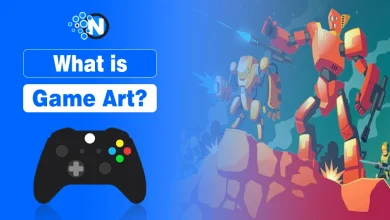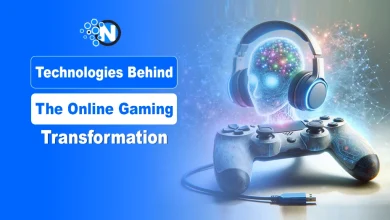Gamification Strategies That Keep Players Coming Back

Gamification as a concept is simple in nature. What it means is incorporating game elements in non-typical places such as mobile apps, websites, or loyalty programs. When people use it correctly, it is a great tool for keeping people engaged for longer.
This is the reason why several online gaming platforms are deeply involved in gamification. They are aware that the perfect combination of challenges and interaction can facilitate the players’ revisit.
But what separates fleeting interest from long-term loyalty?
In this blog post, I have listed the most effective gamification strategies that gaming platforms like new sweepstakes casinos use to transform casual users into loyal players.
What Is Gamification?
Gamification is the application of game-design elements like points, levels, and rewards in non-game contexts to boost user engagement. It taps into basic human psychology: our desire for achievement, competition, and recognition.
For Example, mobile games like Clash Royale offer daily chests and timed rewards to keep players coming back to boost user engagement.

Why Gamification Works?
Gamification employs fundamental principles of human psychology. We all enjoy achieving objectives, getting benefits, and observing our growth. Even tiny victories bring about a feeling of pleasure. As reported in Forbes, gamification is effective as it integrates one’s motivation with fun and delight. It makes people no longer dread doing the repetitive tasks over, as it also involves fun.
The stakes are higher in gaming. If players get bored, they can simply click away. But to prevent that, operators spend money on interesting engagement tactics.
Below is a list of the most efficient ways in which gamification works:
1. Progress Tracking and Achievement Systems
Progress bars, level systems, and achievement badges are present in video games. These elements allow users to understand their development visually. Players do not just play blindly; they can track their progress and their next step.
The point here is that progress becomes an addiction. A player who sees his level meter almost full will want to play on until he gets to the next stage. Rewarding loyalty with achievement systems also encourages the celebration of milestones, which reinforces loyalty.
2. Daily Rewards and Login Bonuses
One basic approach to motivate players to come back is to have some kind of daily reward system. Numerous sites provide minor bonuses such as money, spins, or points for the number of consecutive days a player logs in. These gifts usually grow in value over time. A habit is thus formed.
Daily bonuses in the world of sweepstakes casinos have the power to attract casual players who, even without the intention of playing for a longer period, decide to log in. Hence, the platform stays at the top of the players’ minds.
3. Leaderboards and Competition
Competition is one of the major factors that motivates participation. A comprehensive leaderboard can show players’ standing in comparison with other players. People love the thrill of being among the best players, and that improves participation.
Although a player might not be at the top, being involved in a competition can still hold their interest. In order not to demoralize novices, several platforms have implemented tiered leaderboards and sub-competitions for various skill levels.
4. Quests and Challenges
Adding missions or quests is one of the features that could turn a normal game into a story. Quests can come in different forms, like daily or weekly. Such tasks urge gamers to enter the game regularly and try different game modes. Besides, this way helps keep the freshness of the game, hence reducing the likelihood of boredom.
5. Seasonal Events
Urgency is a strong driver of action. Seasonal events, for instance, holiday-themed tournaments or time-limited prize pools, generate a feeling of wanting not to be left out. Players are aware that the event has a limited time, hence they will most probably take part.
Most of the platforms use events to launch their new features or games. Thus, an event besides generating short-term engagement also leads to a long-term interest in the new content.
6. Social Features and Community Building
Gamification is no longer merely about the incentives, but also about relationships. Online chat rooms, managing friends, and group challenges have made games a social experience. Generally, individuals tend to stay longer at a place if they have someone to play with or compete against.
Communities usually develop in connection with frequent events or team competitions. A sense of belonging can have a strong effect.
7. Personalisation and Adaptive Gameplay
There is no similarity between any two players. Some like quickly paced games that are full of challenges, whereas others like to take their time and play with a slow and steady approach. Personalized gaming platforms are more effective in keeping the engagement of users for a longer time.
Personalisation could be recommending games to a user based on the previous activities or changing the difficulty level to fit the player’s skill. When the experience is customized, the players feel valued and recognized.
8. Reward Variety and Surprise Elements
Predictable rewards are fine; however, unanticipated bonuses frequently produce huge excitement. Secret prizes, a random spin that doubles your winnings, or surprise challenges can energize the players who have become bored with the game.
Moreover, this method is linked to the fact that people like surprises. The novelty of the game is maintained, and it gives the players a motive to come back regularly.
9. Cross-Platform Play and Accessibility
Players are more likely to reappear if they could only play from anywhere, be it a desktop, a tablet, or a mobile phone. The reason is that a cross-platform option enables them to pick up their game from any device.
Game accessibility, including customizable controls or easy layouts, makes a larger audience comfortable with the game. This accessibility to the games’ wider player base is bound to result in longer-term engagement.
Summing Up
Effective gamification is a combination of psychology, creativity, and technology. It is about adding fun elements to the game and also about providing players with a number of other benefits, such as return, interaction, and progress within the same platform.
Gaming platforms utilize a combination of progress tracking, social interaction, and new challenges to maintain players’ interest. When implemented effectively, gamification goes beyond a mere feature and becomes a major driver of business growth.




